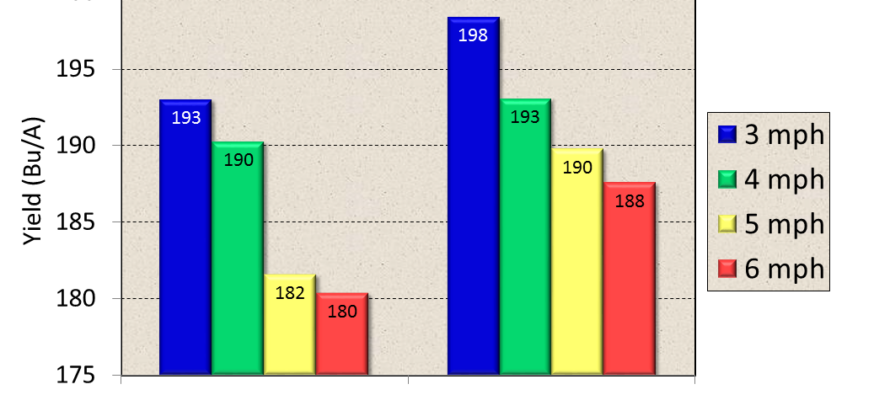Tips for Planting High Yielding Corn

Related Articles
- 2010 Soybean And Corn Variety Trial Data 3
- Flag The Technology 0
- Spring Nitrogen Fertility Suggestions for Wheat 0
Latest Tweets
Early planting is a well-known component of successful corn production, since environmental stress normally increases during the summer, reducing yield potential of late-plantings. Additionally, yield champion producers to industry experts also agree that achieving a uniform stand is critically important to high corn yields. However, although corn seedlings generally have tremendous vigor compared to other crops, corn is usually far less forgiving when issues arise.
Our rainy environment and other factors often restrict our window of opportunity for spring planting and can significantly hinder the quality of corn stands we achieve. Therefore, we will likely have difficult decisions to make regarding when to safely proceed with planting. Thankfully, last year dry conditions generally encouraged swift planting progress and strong seedling emergence during the prime planting time, contributing to high corn yields, but the four years preceding certainly challenged Mississippi corn producers in many ways.
The primary environmental factors which influence corn establishment outcome are soil temperature and moisture. Soil temperature is the main factor influencing seedling growth rate. Therefore, you should always make sure temperatures are favorable for corn seedling development before you begin planting. Cool soils will substantially hinder germination and seedling growth, which could create emergence disparity and distort development. Sluggish growth also makes seedlings more vulnerable to other issues, including wet, saturated soils, seedling pathogens, insect pests, and herbicide injury. We also know all too well from recent years that soil saturation can limit aeration, stunt or kill corn seedlings, and restrict root development.
There are several actions or management options we can use to improve our chances of achieving successful corn stands.
- Measure soil temperature before you start planting. A reasonable goal for corn is at least 55 degrees F measured early in the morning at planting depth. Corn will not germinate at temperatures below 50 degrees F, and its growth rate slows considerably with cool temperatures. Therefore, exposing your expensive seed to adverse conditions is asking for big trouble.
- Avoid planting fields while soils are marginally wet. Your goal associated with planting is to optimize precision and achieve uniform, vigorous stands. Planting wet soils will likely inhibit planter performance, create persistent issues and compound problems with abundant rainfall that hinder stands. Tire traffic from tractors and equipment produce soil compaction that inhibits root and plant growth. Seed furrow compaction can inhibit moisture imbibition by the seed as well as severely restricting seedling root growth. You simply have to be patient enough to avoid these issues. If your corn planting intentions are less than normal, you have even further incentive to plant during favorable conditions.
- Plant well-drained soils first. Heavy-textured clay soils naturally stay wet longer, leading to more stand issues and failure, particularly when planting early.
- Don’t knock down your beds any further than necessary. Raised beds are intended to provide relief to seedlings from saturated soils. Reducing bed height diminishes their effectiveness, while offering a cooler environment for your seedlings. This is a no-win scenario.
- Planting depth may influence seedling development. Corn seed should be planted at least 1 ½ inches deep to enable proper root development, and 1 ½ to 2 inches is normal. Deeper planting is not usually needed unless soils are really dry and you need to place seed deeper to reach moisture, which is quite rare in this region. Deep planting will likely expose seeds to lower soil temperature and more moisture, which can hinder seedling development. Thus, keep planting depth moderate, particularly when planting early, or during less favorable conditions.
- Moderating planter ground speed will enhance stand uniformity and corn yields. Top producers such as new World Record corn producer David Hula state, “Even spacing and emergence are critical to high corn yields.” Increasing planter ground speed hinders planter performance, stand uniformity and corn yield. Although new technology and after-market equipment may improve seed metering performance, high ground speed still reduces stand uniformity achieved. Increasing speed increases inertia causing seeds to roll and/or bounce more during planting, creating poorer seed spacing and seeding depth variability. For instance, even at a slow speed of 4 mph, you are dropping about 15 seeds per second per planter unit – and each mile per hour increases the distance covered 18-inches per second, so achieving a picket fence stand is no simple task. Do your part to improve your outcome by slowing down.






Let me tell You a sad story ! There are no comments yet, but You can be first one to comment this article.
Write a comment